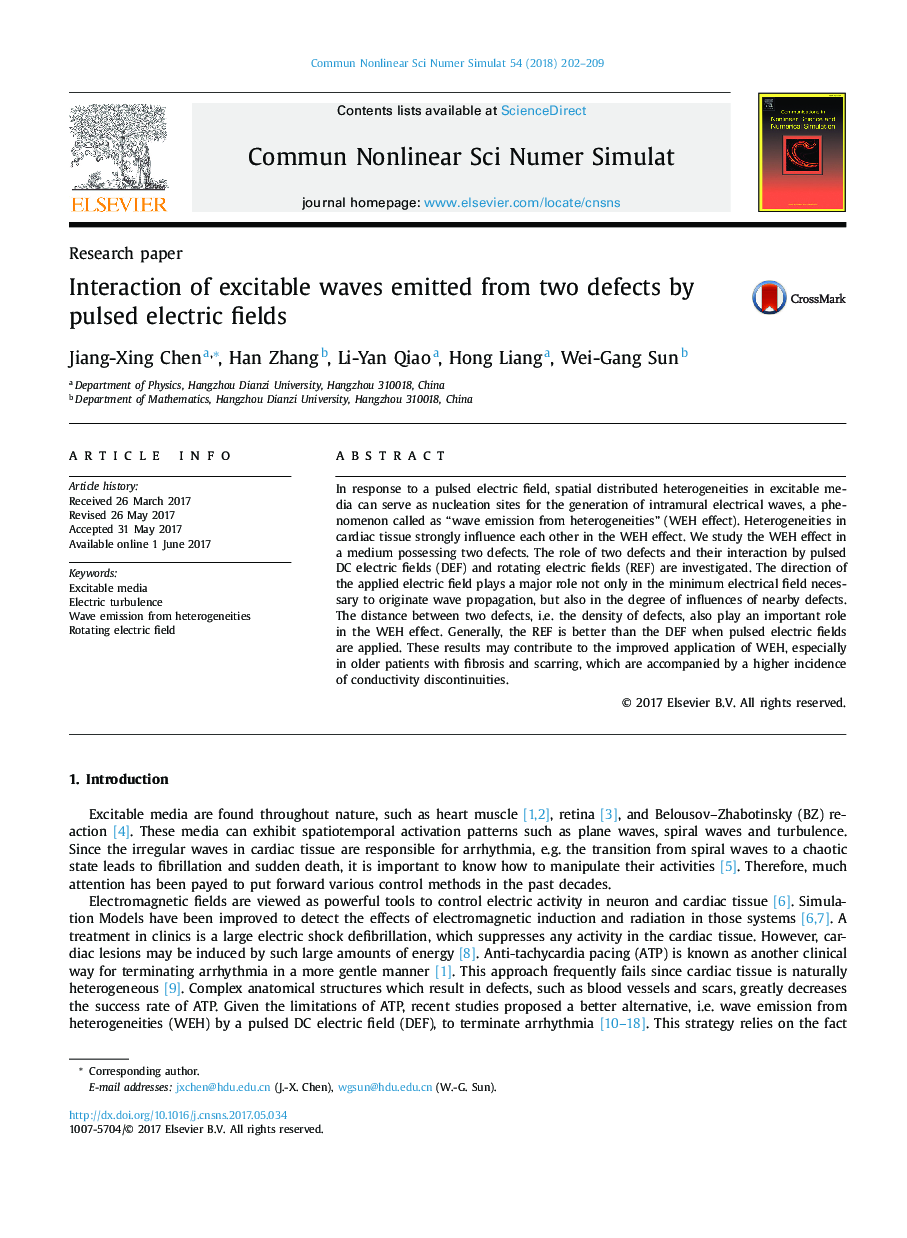| Article ID | Journal | Published Year | Pages | File Type |
|---|---|---|---|---|
| 5011371 | Communications in Nonlinear Science and Numerical Simulation | 2018 | 8 Pages |
â¢The wave emission from heterogeneities (WEH) in a medium including two obstacles is studied. The excitation and interaction of waves from the two obstacles by a pulsed DC electric field (DEF) are analyzed. It is indicated that heterogeneities in excitable media strongly influence each other.â¢A rotating electric field is proposed to study the WEH since it possesses rotation symmetry. The REF is found to be better than the previous studied DEF for the application of WEH. This result may contribute to the improved application of WEH, especially in older patients with fibrosis and scarring, which are accompanied by a higher incidence of conductivity discontinuities.
In response to a pulsed electric field, spatial distributed heterogeneities in excitable media can serve as nucleation sites for the generation of intramural electrical waves, a phenomenon called as “wave emission from heterogeneities” (WEH effect). Heterogeneities in cardiac tissue strongly influence each other in the WEH effect. We study the WEH effect in a medium possessing two defects. The role of two defects and their interaction by pulsed DC electric fields (DEF) and rotating electric fields (REF) are investigated. The direction of the applied electric field plays a major role not only in the minimum electrical field necessary to originate wave propagation, but also in the degree of influences of nearby defects. The distance between two defects, i.e. the density of defects, also play an important role in the WEH effect. Generally, the REF is better than the DEF when pulsed electric fields are applied. These results may contribute to the improved application of WEH, especially in older patients with fibrosis and scarring, which are accompanied by a higher incidence of conductivity discontinuities.
